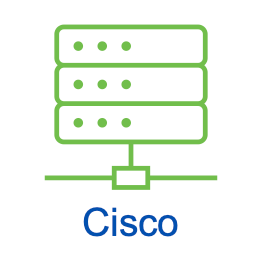CCNA

Class Overview
Cisco’s Implementing and Administering Cisco Solutions
, or CCNA, training class provides a broad range of fundamental knowledge and, through a combination of lecture, hands-on labs, and self-study, the student will learn how to install, operate, configure, and verify basic IPv4 and IPv6 networks.
Tooled for the latest technologies and job responsibilities, the CCNA training class and its associated exam gives the student the foundation they need to keep themselves, and their employer, at the industry’s forefront.
The CCNA certification training class covers a breadth of topics, including:
– Network fundamentals
– Network access
– IP connectivity
– IP services
– Security fundamentals
– Automation and programmability
The class consists of 5 days’ Instructor-led Training (ILT), followed by self-study* and helps you prepare to take the Cisco® Certified Network Associate (CCNA®) exam.
Class Details
Objectives
After taking this training, the student should be able to:
- Explain the role and function of network components
- Describe characteristics of network topology architectures
- Describe IPv6 address types
- Describe wireless principles
- Describe switching concepts
- Describe Cisco Wireless Architectures and AP modes
- Interpret the components of a routing table
- Explain the role of DHCP and DNS within the network
- Define key security concepts
- Explain how automation impacts network management
Prerequisite Knowledge Advisory
Although there are no formal prerequisites, before taking this class, you should have:
- Basic computer literacy
- Basic PC Operating System navigation skills
- Basic Internet usage skills
- Basic knowledge of IP addressing
Required Exam for CCNA Certification
Exam: 200-301
Proctor: PearsonVUE
Recertification: 3 years
CCNA Training Class Outline
In-class Lecture
Exploring the Functions of Networking
Introducing the Host-to-Host Communications Model
Operating Cisco IOS Software
Introducing LANs
Exploring the TCP/IP Link Layer
Starting a Switch
Introducing the TCP/IP Internet Layer, IPv4 Addressing, and Subnets
Explaining the TCP/IP Transport Layer and Application Layer
Exploring the Functions of Routing
Configuring a Cisco Router
Exploring the Packet Delivery Process
Troubleshooting a Simple Network
Introducing Basic IPv6
Configuring Static Routing
Implementing VLANs and Trunks
Routing Between VLANs
Introducing OSPF
Improving Redundant Switched Topologies with EtherChannel
Explaining Basics of ACL
Enabling Internet Connectivity
Explaining the Evolution of Intelligent Networks
Introducing System Monitoring
Managing Cisco Devices
Self-Study
Building Redundant Switched Topologies
Exploring Layer 3 Redundancy
Introducing WAN Technologies
Introducing QoS
Explaining Wireless Fundamentals
Introducing Architectures and Virtualization
Examining the Security Threat Landscape


